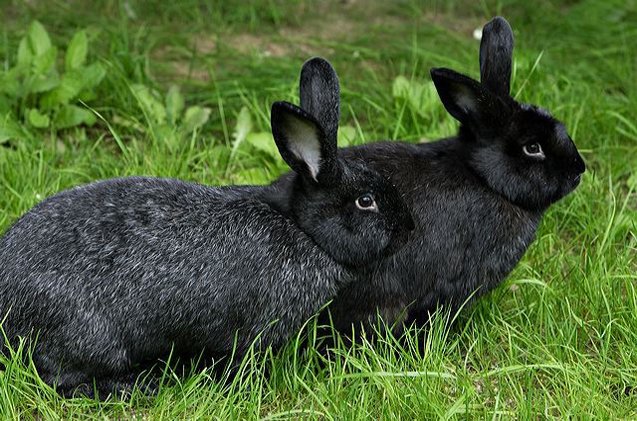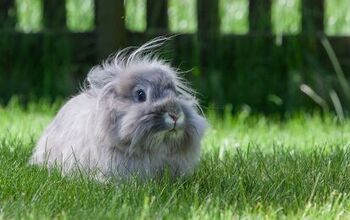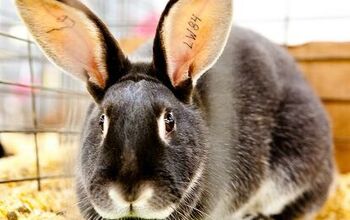Silver Fox Rabbit


About Silver Fox Rabbit
The Silver Fox Rabbit is the second breed to have originated in the United States thanks to Walter B. Garland of North Canton, Ohio. This multi-purpose breed was developed by crossing Checkered Giants, Champagne D’Argent and either English Silvers and/or American Blue rabbits. The breed was recognized and a working standard was approved by the American Rabbit Breeder’s Association (ARBA) in 1925. At first, this breed was known as the American Heavyweight Silver but the name was changed to American Silver in 1929 and later to Silver Fox. It is known to be one of the rarest breeds in America and is considered to be threatened by the American Livestock Breeds Conservancy.
The Silver Fox Rabbit is known to be one of the rarest breeds in America.
Silver Fox rabbits are large, commercial-type rabbits that weigh anywhere from 9-12 lbs once fully grown, with does usually weighing a pound or two more than bucks. It has a medium-length body with well-fleshed out hindquarters and shoulders.
The Silver Fox Rabbit has a “standing coat” that resembles that of a Silver Fox in the Arctic. It has an extremely dense, short fur that stand up straight in the direction it is stroked, a trait no other breed has. Despite this, it does not require any special treatment in the grooming department. Bi-weekly grooming with a slicker brush during off-shedding seasons should be sufficient. Remember to never bathe your rabbit, as this causes them great stress. Instead, use a damp cloth to spot-clean any impurities on its coat.
While Silver Fox Rabbits come in a variety of colors (such as blue, chocolate and lilac), the ARBA only currently accepts black Silver Foxes. Blue Silver Fox rabbits were accepted by the ARBA, however it was removed in the 1970s due to decrease in the number of blue Silver Foxes being shown.
Silver Fox rabbits are known to be gentle, docile creatures and are wonderful mothers.
Like any other breed of rabbit, Silver Fox rabbits require a diet consisting of at least 70 percent hay. The rest of the diet is made up a healthy balance of pellets, leafy greens, fruits and vegetables. Be aware of what kind of leafy greens you feed your rabbit, as some of them (like iceberg lettuce) contain no vitamins or nutrients. On the contrary, it contains landanum, which can be harmful in large quantities. Be careful of what kind of vegetables you feed your rabbit, as some are harmful (such as beans, cabbage, potatoes, etc), and other fruits contain too much sugar to be healthy for them.
Silver Fox rabbits require a large enclosure to live a lengthy, comfortable life. Should your rabbit spend most of its time outdoor, wood enclosures that are raised from the ground and have a fenced bottom with a ramp are preferred to keep rabbits safe from the elements as well as predators. Indoor enclosures should have a wire frame on the sides and a plastic bottom where pet owners can place bedding. Some rabbit cages also have wire bottoms, however the wire is harsh on your rabbit’s feet, so use bedding is soft and more comfortable. Because of that, don’t use wire-bottomed cages for any rabbit, especially the Silver Fox because of its large size. Be sure to spot-clean the bedding every day to give your rabbit a dung-free area to sleep and completely change the bedding every week.
Pet Silver Fox rabbits should spend a good chunk of its time out of enclosures in order to cultivate a docile, friendly rabbit that is accustomed to humans of any age, as well as other pets such as dogs and cats. The Silver Fox Rabbit enjoys exploring its surroundings whether indoors or out, so always make sure indoor rooms are bunny-safe (no hazards such as exposed wires) and outdoor spaces should be fenced in to prevent running/hopping off and/or keep it safe.
Silver Foxes are not susceptible to any particular disease and is, overall, a healthy rabbit. The inside of its ears should be regularly checked for ear mites or excess buildup of wax, and must be cleaned periodically. Like most other rabbits, the Silver Fox Rabbit should also be checked for overgrown teeth, as teeth do not stop growing. Rabbits that have a correct balance of hay, fruits and vegetables, however, should have no problem with overgrown teeth. A pea-sized amount of de-worming paste twice a year is also recommended to keep them healthy and protected all-year round.
The Silver Fox Rabbit has a “standing coat” that resembles that of a Silver Fox in the Arctic.
Silver Fox rabbits are known to be gentle, docile pets and are also wonderful mothers and surrogate mothers. Despite being used mainly for meat and pelt, these rabbits are also excellent show-worthy animals and make great pets for seniors, singles, couples or families with children looking to get their first pet. Rabbits are fantastic low-maintenance pets who tolerate being picked up and petted so long as it is well-socialized when it is a young kits.
Training rabbits how to use a litter box is sometimes easier said than done, however it is not impossible. With lots of patience, time and reward-based training, your Silver Fox will understand the concept of litterbox training within a few weeks to a few months.
When it comes to toys, each rabbit is different and may enjoy something as simple as a cardboard box or ball to play with while other rabbits enjoy a more mentally stimulating toy such as those purchased at pet stores. It is all up to the owner to find out which toy their pet rabbits enjoys the most.
Photo credit: Smithsonian’s National Zoo/Flickr; Terrabyte Farm/Flickr

More by Diana Faria

























